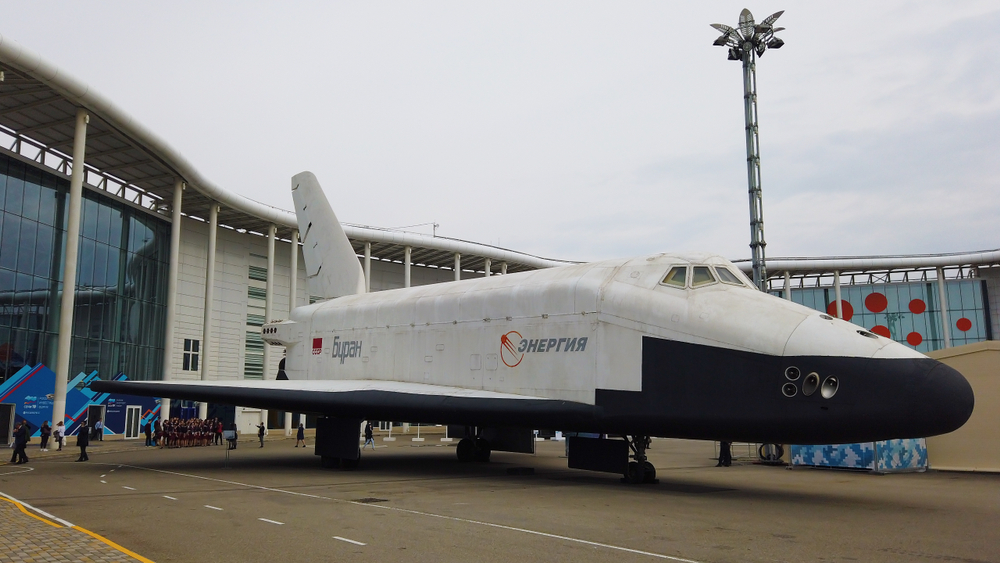The 1990s were an exciting time for car enthusiasts, with automakers pushing the boundaries of design and technology through innovative concept cars. Many of these unique vehicles dazzled at auto shows, capturing imaginations with futuristic features and bold styling. Yet, despite the hype, several standout concepts never made it to production due to high costs, technical challenges, or market demands. Here’s a look at 20 incredible concept cars from the 90s that remain memorable—even if they never hit the road.
Contents
Ford GT90 (1995)

The Ford GT90 was conceived as a modern iteration of the iconic GT40, showcasing a powerful quad-turbo V12 engine with an impressive 720 horsepower. Ford engineers designed the GT90 as a showcase of speed and innovation, creating one of the fastest cars of the decade. While its performance potential was thrilling, the car’s high production costs and niche appeal led Ford to abandon mass production plans. Instead, the GT90 served as a symbol of Ford’s design prowess, setting the stage for future supercar projects.
Chrysler Atlantic (1995)

Inspired by the elegance of pre-war luxury cars, the Chrysler Atlantic adopted styling reminiscent of the 1930s Bugatti models. Fitted with a 4.0-liter straight-eight engine, the Atlantic captured Chrysler’s ambitious retro vision. Despite its beauty, high production costs and limited consumer appeal discouraged Chrysler from taking it to market. The Atlantic was ultimately displayed as a design showcase rather than a feasible model. Its retro influence, however, can still be felt in some of Chrysler’s later luxury designs.
Volkswagen W12 Syncro (1997)

The Volkswagen W12 Syncro demonstrated VW’s technical capability, featuring a mid-engine layout and all-wheel drive to maximize its high-performance potential. Despite its advanced aerodynamics and thrilling capabilities, the Syncro faced challenges as Volkswagen was more associated with practical, budget-friendly vehicles. The cost of producing such a specialized car further discouraged VW from mass production.
Honda P-NUT (1999)

The Honda P-NUT, or Personal-Neo Urban Transport, presented a futuristic, ultra-compact design aimed at maneuvering urban environments. Its forward-thinking structure and cabin-forward layout made it ideal for tight city spaces. However, Honda hesitated due to its unconventional look, which lacked mass appeal and struggled to meet safety standards. The P-NUT was left as a bold concept, though its compact efficiency inspired some later models. Elements of its design would influence Honda’s future city-focused vehicles.
Cadillac Evoq (1999)

With a Northstar V8 engine and a striking design, the Cadillac Evoq was a roadster concept meant to showcase Cadillac’s performance ambitions. The Evoq turned heads with its aggressive yet luxurious aesthetic and cutting-edge technology. Ultimately, Cadillac decided not to pursue production, instead focusing on sedans and SUVs with broader market appeal. The Evoq left a lasting mark, as its design influenced Cadillac’s styling for years to come. Vehicles like the CTS and XLR carry its design DNA.
BMW Z9 Gran Turismo (1999)

The BMW Z9 Gran Turismo concept hinted at the future of BMW’s design with its bold lines and innovative features like the iDrive system. The Z9 was a large, luxurious car that also incorporated high-tech driver-assist features, pioneering new interior tech. However, the high production costs associated with the advanced technology made BMW reconsider. Rather than going into full production, BMW extracted features like iDrive for use in other models. Its influence is still apparent in BMW’s luxury offerings today.
Audi Avus Quattro (1991)

With a lightweight aluminum body and a proposed W12 engine, the Audi Avus Quattro was an ambitious supercar concept that turned heads. Audi’s engineers hoped to use the concept to illustrate the potential of an all-aluminum body and a high-performance engine. However, its exorbitant production costs made it more of a dream than a practical offering. The Avus Quattro concept eventually became an inspiration for Audi’s high-performance lineup. Its influence can be seen in the Audi R8 and other performance models.
Peugeot 806 Runabout (1997)

Peugeot’s 806 Runabout attempted to merge minivan practicality with open-top sportiness, offering a unique open cabin design. While family-friendly, Peugeot recognized the market for such a hybrid vehicle was limited. The Runabout didn’t advance past concept stages, but the idea of versatile, family-oriented vehicles continued to evolve in Peugeot’s lineup. Its legacy lives on in Peugeot’s multi-purpose vehicle designs.
Mercedes-Benz F200 Imagination (1996)

The Mercedes-Benz F200 Imagination was packed with futuristic tech, such as joystick controls and interactive infotainment, embodying luxury innovation. Mercedes intended the concept to showcase advanced driver-assist systems and suspension technology. But the radical features made production costs sky-high, and it never moved forward. Many of its innovations, however, found their way into later Mercedes models. The F200 remains a symbol of Mercedes’ forward-thinking approach to technology.
Dodge Copperhead (1997)

Dodge aimed to create a more affordable sibling to the Viper with the Copperhead concept, a lightweight roadster with a V6 engine. Geared toward younger drivers, the Copperhead offered a sporty alternative with a lower price tag. However, Dodge ultimately found the model’s cost too high to market as an entry-level sports car. While it was shelved, the Copperhead inspired later sporty models for Dodge’s younger customers. Its design language lived on in the brand’s sports lineup.
This article originally appeared in MyCarMakesNoise.
More from MyCarMakesNoise
17 Overlooked Aircraft for Affordable Charter Services

Finding the right aircraft for charter services doesn’t always mean going for the most well-known or expensive options. Many overlooked planes offer excellent performance, comfort, and cost-efficiency, making them great choices for affordable travel. Read More.
16 Common Misunderstandings About Space Shuttle Launches

Space shuttle launches have always captured the imagination, but many aspects of these complex missions are often misunderstood. From how the shuttle actually reaches space to the safety measures involved, there are plenty of misconceptions surrounding these incredible feats of engineering. Read More.
20 High-Speed Trains Revolutionizing Global Transit

Discover the world’s fastest trains that redefine travel as we know it. From cutting-edge technology to breathtaking speeds, these marvels of engineering are revolutionizing transportation. Read More.














